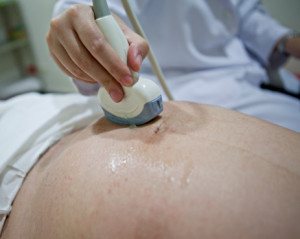Birth Injury Lawsuit Alleges Negligence Led to Permanent Brain Damage
 Parents have filed a birth injury lawsuit on behalf of their son, claiming mistakes made during his birth led to his permanent brain damage and other injuries. The plaintiffs in this case have brought their complaint against the United States of America, since specific medical personnel named in this complaint were employees of the U.S. at the time of their child’s delivery.
Parents have filed a birth injury lawsuit on behalf of their son, claiming mistakes made during his birth led to his permanent brain damage and other injuries. The plaintiffs in this case have brought their complaint against the United States of America, since specific medical personnel named in this complaint were employees of the U.S. at the time of their child’s delivery.
The complaint, which was filed in U.S. District Court for the Western District of Missouri on December 9, alleges members of the staff at St. Mary’s Hospital in Jefferson City, Missouri, failed to follow proper protocol in the birth of the plaintiff’s son. Specifically, the plaintiffs claim physicians on staff at the hospital failed to recognize the mother plaintiff was a high risk pregnancy that required special care and failed to deliver the baby in a timely fashion.
Mother plaintiff induced, baby not monitored
When the mother plaintiff was admitted to St. Mary’s Hospital on December 4, 2012, she was given Pitocin to induce labor. The dosage of Pitocin was increased when the labor failed to progress, although the baby’s heart rate was never monitored to determine how the baby was handling the extended labor process.
A Cesarean delivery was eventually performed when the mother failed to deliver the baby vaginally. However, the plaintiffs claim the C-section was not performed quickly enough, which left the baby vulnerable to birth injury. The baby was diagnosed with hypoxic encephalopathy after his birth, which is a brain injury caused by oxygen deprivation. According to Medscape, around 840,000 or 23 percent of all neonatal deaths across the globe are caused by birth asphyxia or oxygen deprivation every year.
About hypoxic-ischemic encephalopathy
When the child survives, hypoxic-ischemic encephalopathy is a significant cause of brain damage that can lead to motor impairment, developmental delay, cognitive impairment and seizures. The injury and subsequent brain damage can also lead to a diagnosis of cerebral palsy, a neurological condition that can significantly impair a child physically and cognitively for life. It can be difficult to know the full level of impairment the child has suffered until the age of three or four.
In this complaint, the plaintiffs claim their child has suffered lost intelligence and cognitive abilities, fine and gross motor impairment and developmental delays. All of his bodily systems have been damaged and he has suffered seizures that may continue in the future. His lifetime of suffering will cost him loss of enjoyment of life and cost his parents the “comfort, services and society” of their son.
According to statistics from the Healthcare Cost and Utilization Project (HCUP), childbirth makes up a significant portion of the hospitalizations in the U.S. today. In 2006, nearly 157,700 injuries occurred to mothers and their babies that might have been prevented with appropriate care. While this number may be relatively small compared to all of the births that occur in the U.S., when the injuries do occur, they can be life-changing.
Life changes after injuries
As in the case of these parents, the mother plaintiff had to quit her job as a teacher to care for her disabled son full time. In addition to the loss of income suffered by the family, the medical bills to care for their son have been well beyond their means. In addition, the child will likely need special care throughout his life, which will increase the cost of care exponentially in the future.
As a result of their son’s injuries and subsequent brain damage, the parents are seeking damages from the United States in an amount up to $15 million. This amount includes both general damages and special damages incurred as a result of their child’s birth injuries.
- CerebralPalsy.org, Hypoxic-Ischemic Encephalopathy, http://cerebralpalsy.org/about-cerebral-palsy/cause/hypoxic-ischemic-encephalopathy/
- Medscape, Hypoxic-Ischemic Encephalopathy, http://emedicine.medscape.com/article/973501-overview
- U.S. National Library of Medicine, Perinatal Hypoxic-Ischemic Encephalopathy, http://www.ncbi.nlm.nih.gov/pmc/articles/PMC3010686/
- Healthcare Cost and Utilization Project (HCUP), Potentially Avoidable Injuries to Mothers and Newborns during Childbirth, 2006, https://www.hcup-us.ahrq.gov/reports/statbriefs/sb74.jsp

 Resources
Resources
 Resources
Resources

